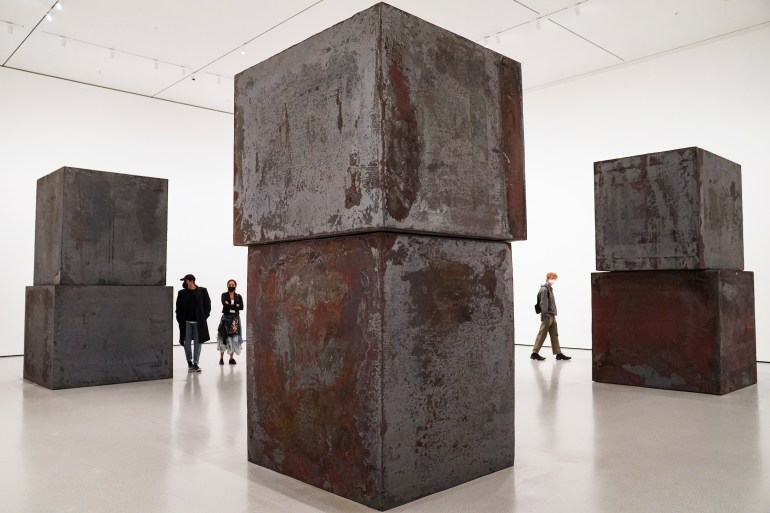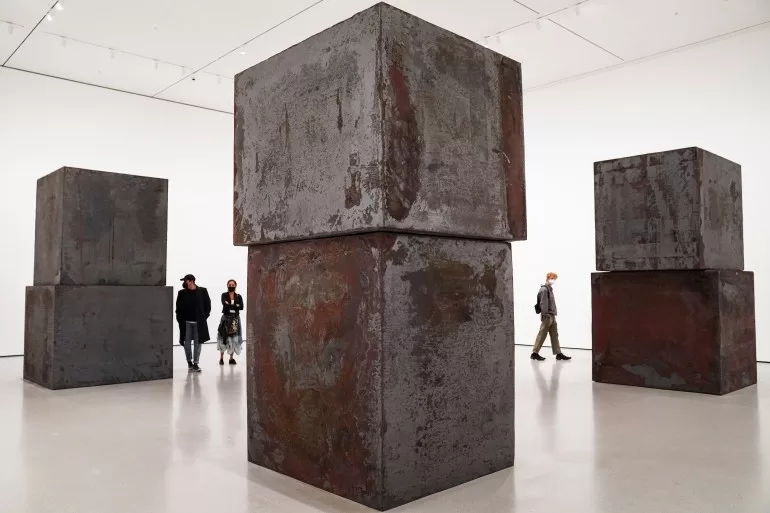The artist died from pneumonia at his home in Long Island, New York on Tuesday, his lawyer John Silberman told The New York Times.
Serra’s colossal works are installed all over the world, from Paris museums to the Qatari desert where four giant steel plates, each 14 metres high, are positioned over a distance of one kilometre (0.62 miles).
“This is the most fulfilling thing I’ve ever done,” Serra said at the time of the sculpture known as East-West/West-East. “It’s a piece that I’d really like to be seen.”
Born in San Francisco in 1938 to a Spanish father and Russian mother, Serra grew up visiting the shipyards where his father worked.
He worked in steel mills to support himself while he studied English Literature at the University of California before going on to study painting at Yale.
In 1966, Serra moved to New York where he began making art from industrial materials such as metal, fibreglass and rubber.
Known by his colleagues as the “poet of iron,” Serra became world-renowned for his large-scale steel structures, such as monumental arcs, spirals and ellipses that were welded in Cor-Ten steel. He also worked with other non-traditional materials – such as rubber, latex, neon and molten lead – and was closely identified with the minimalist movement of the 1970s.
“We mourn the loss of Richard Serra whose monumental works reshaped our perceptions of space and form,” the Guggenheim Museum said in a post on X on Tuesday.
Also on X, Andrew Russeth, the editor at ArtNews in New York, wrote that Serra was an artist of “uncompromising ambition and invention – monumental in every sense”.
Serra credited influences from France, Spain and Japan to his artistic style and his evolution from painting to sculpting.
He designed sculptures specifically for the spaces they were destined to occupy and said he was fascinated by the way in which his works interacted with their environments.
“Certain things… stick in your imagination, and you have a need to come to terms with them,” Serra told US interviewer Charlie Rose in the early 2000s.
“And spatial differences: what’s on your right, what’s on your left, what it means to walk around a curve, looking at a convexity and then looking at a concavity – just asking fundamental questions about what you don’t understand, those things have always interested me,” he said.
The exploration of sculpture in its environment was clearly visible in one of Serra’s most controversial works, Tilted Arc, which was installed in New York in 1981.
The 3.6 metre-high (12-foot) rust-coated metal plate curved its way through the Federal Plaza in Manhattan for 36.5 metres (120 feet), set at an angle that made it look like it could topple over at any second. The structure so disturbed residents that it was removed in 1989 after a long legal battle but Serra’s position in the art world was already secure.

Serra’s work drew acclaim in Europe leading to solo exhibitions at major museums in Germany and France, after he travelled to Spain to study Mozarabic architecture in the early 1980s.
In 2005, eight major Serra works were installed permanently at the Guggenheim Museum Bilbao and in 2007, the Museum of Modern Art in New York mounted a major retrospective of his work.
Serra’s signature monumental scale was present in the off-kilter reddish-brown rectangles installed in Paris’s Grand Palais for his 2008 Monumenta exhibit and in the swirling and twirling steel plates in the Guggenheim Museum in Bilbao, Spain.
East-West/West-East was completed in 2014.
